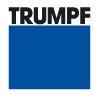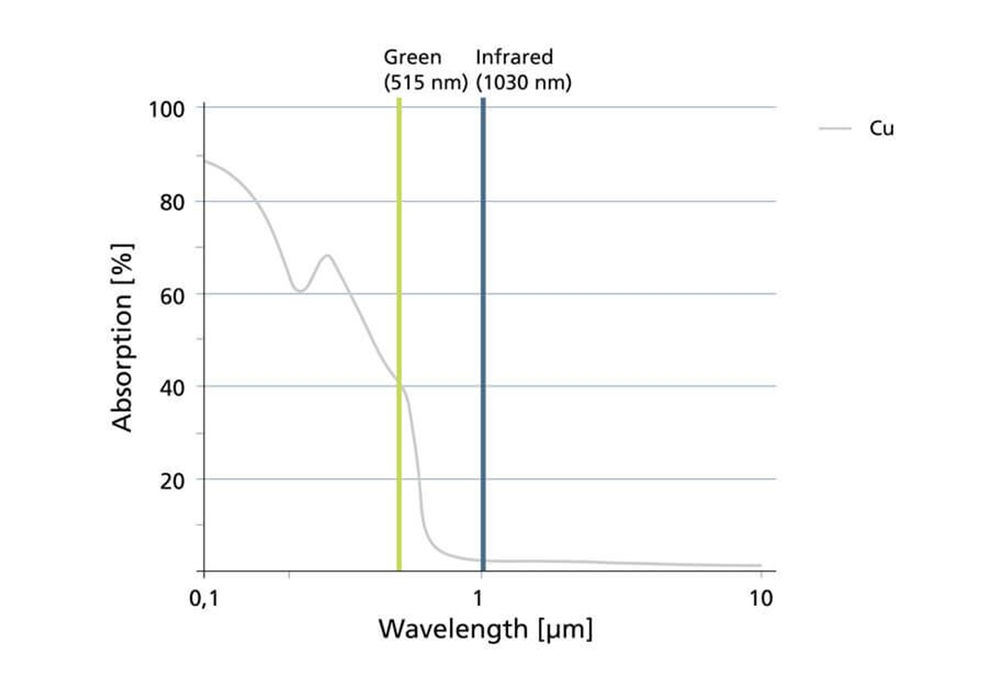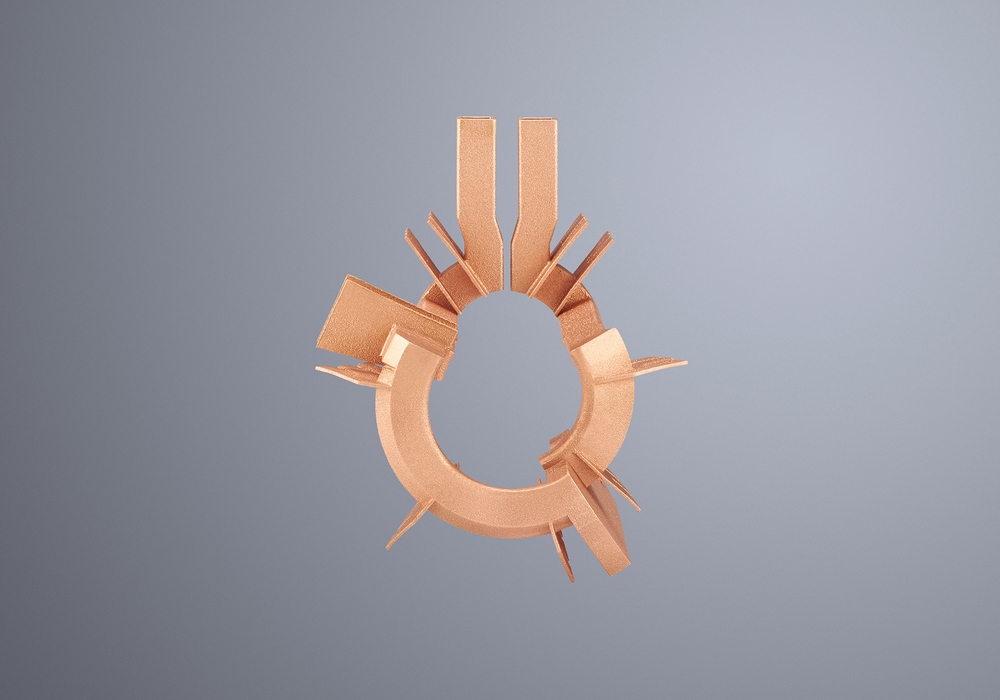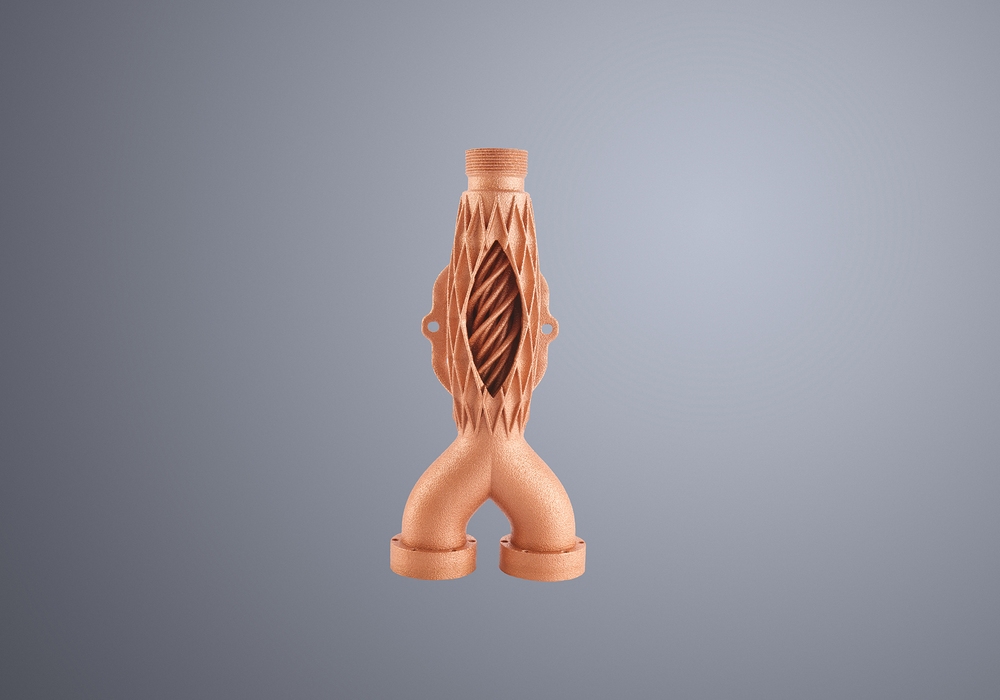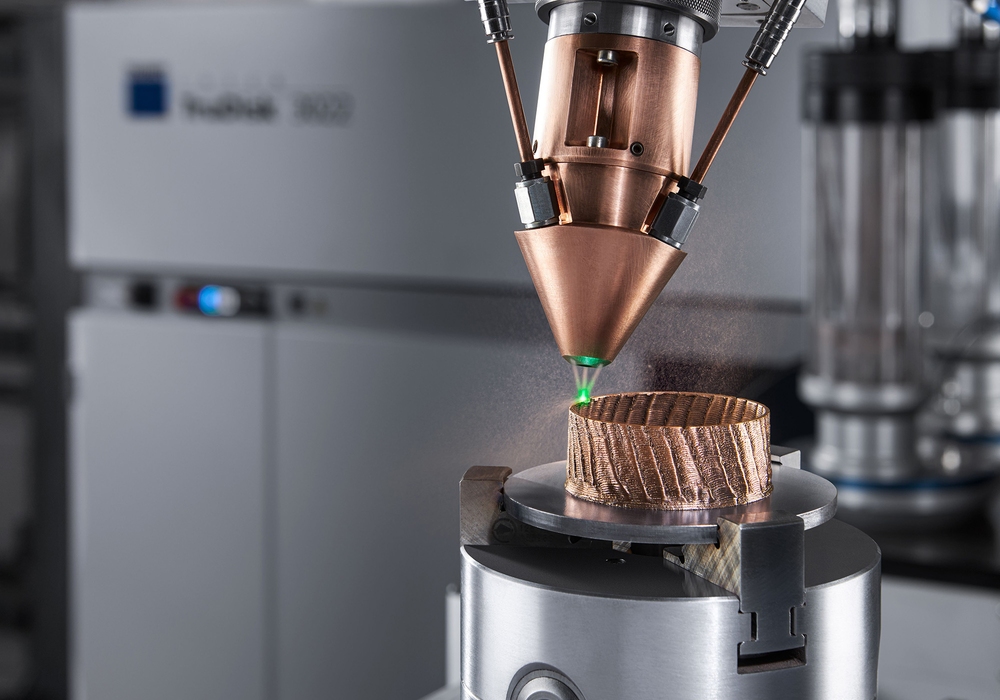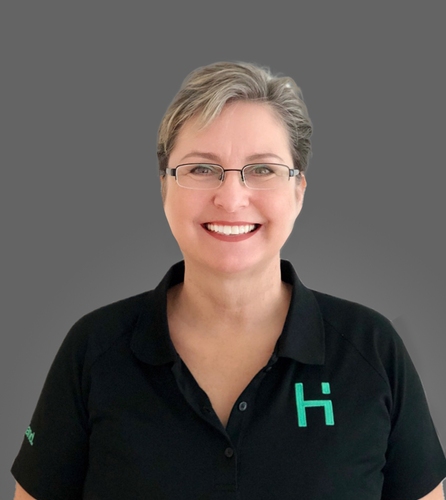The rise of electrical mobility is revolutionising the global vehicle industry. From cars to ships, trucks to construction machines, even aviation is transitioning towards electrical drives and battery technology. This trend has not only impacted major automotive brands but also small and medium-sized enterprises and start-ups that are developing new production methods and technologies to meet the growing demand for e-mobility components. To address this challenge, companies must explore alternative laser sources that can provide a more controlled welding process. The laser has become a standard for joining and welding copper electrical components in batteries, motors, and powertrains. But starting the welding process with a conventional IR laser source (e.g., fiber lasers) requires significant energy input. The material heats up and, as soon as the melting temperature is reached, the rate of radiation absorption suddenly increases, producing a spike in energy that is difficult to control.
Challenges of welding copper
Copper – and to a lesser degree aluminium – is an ideal choice for electrical connectors due to its high electrical and thermal conductivity. It conducts electricity and heat better than any other commonly used industrial metals. Unfortunately, however, copper absorbs very little light in the infrared wavelength, which is exactly the wavelength region in which most industrial lasers operate. Working at a wavelength of around one micrometre, these lasers have a tough time processing copper: at room temperature, copper reflects 95 percent of infrared light and only absorbs between 3 and 5 percent. As well as being very inefficient, this also poses a hazard since the reflected laser light can adversely affect or even damage its surroundings. The risk increases further if the chamber is narrow and confined or if temperature-sensitive components are located close to the weld point.
As the temperature of the copper increases, so does the rate at which it absorbs infrared laser light, climbing as high as 20 percent. In addition, the excess energy leads to erratic processes with spatter along the entire weld path – something that is completely unacceptable in a confined environment full of sensitive electronics. With green laser light, all these problems disappear. Scientists have long known that copper absorbs short-wavelength laser light significantly better than long-wavelength light. At room temperature, copper absorbs 40 percent of this green laser light – a rate of absorption that is eight times higher than for near-infrared wavelengths.
Advantages of green laser to weld copper
It has been demonstrated in numerous tests that the surface properties of copper do not influence the welding results with green light. This means it makes no difference if the copper is heavily oxidised, polished, sanded, or untreated. The process is not affected by the degree of oxidation, superficial scratches, or the reflective nature of the mirror-finish surfaces. In an industrial environment, this means that using green laser light, in many cases, avoids the need for upstream surface preparation processes like sandblasting and tin coating. Not only is green laser light an ideal choice for copper processing, but it is also suitable for the processing of other commonly used industrial metals, including aluminium, steel, and gold. This makes green laser particularly attractive for users who are looking to process a variety of materials using a single beam source.
Modern industrial disk lasers that operate in the green spectrum (515 nanometres wavelength), are revolutionising the laser welding industry. They have a power output of 3 kW and beam quality of up to 2mm rad. Disc lasers are better than diode lasers in every way, and they have a smaller numerical aperture of 0.1. This makes it easier to access narrow work areas, which helps reduce contamination and extends optics’ life. Plus, the longer Rayleigh length means you don’t have to worry about fixture design or part accuracy.
Green laser ideal for additive manufacturing
With its unique green disk laser beam quality, it offers unparalleled precision and accuracy. Equipped with a powerful TruDisk1020 with up to 1kW output power, this machine is a game-changer in the world of additive manufacturing. The focus diameter of just 0.2mm ensures that your prints are of the highest quality. The TruPrint 5000 Green Edition offers new opportunities for manufacturing induction coils, components for complex cooling applications, and high-performance heat exchangers for power electronics and optoelectronics. By using highly conductive pure copper ETP (EN CW004A) with a Cu content of > 99.9%, the machine can achieve an electrical conductivity of 100% IACS and porosity values of far below 0.5%. Additive manufacturing reduces soldering joints and increases the electrical and thermal conductivity in complex parts. This is particularly beneficial for electric motor development and other high-end applications that require the highly conductive properties of copper.
Market research has demonstrated that an Automatic Machining (AM) machine equipped with a Green Laser can significantly reduce the cost of production when pure copper is being processed. Additionally, the green wavelength of the green laser allows for higher welding rates and a more efficient melting process than IR laser sources in a variety of materials. Besides additive manufacturing with direct laser manufacturing using the green laser, TRUMPF also developed the process for laser metal deposition with the green laser scale-up and speed-up the process with higher laser powers. This powder nozzle process is already incorporated into a TruLaser Cell 3000 – a TRUMPF 5 Axis laser machine, which is capable of laser welding and laser metal deposition with the green wavelength. The green Laser metal deposition can be used for building 3D parts, modifying the shape of machines Cu parts or just us a high-speed cladding process to add a thin layer of copper onto the surfaces of machined parts.
Are you ready to upgrade your factory with green laser technology?
Find out how your applications can benefit from green laser and revolutionise your manufacturing process. Get in touch with our specialists today.
Expert
Cornelia Luhrs
Event and Communications Coordinator
Conny is a dedicated trend-spotter and technology enthusiast in the manufacturing industry. Her passion for the latest advancements is matched only by her talent for organising events. If you want to stay ahead of the curve, Conny is the person to connect with.

